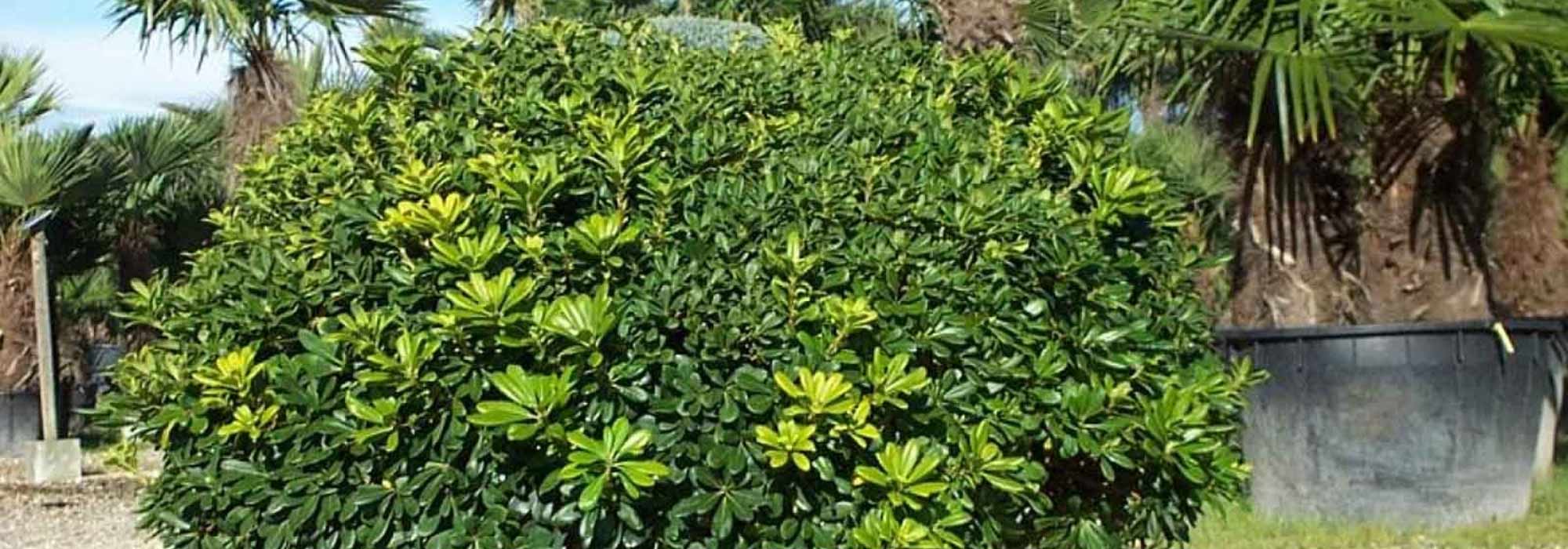
9 trees and shrubs with a rounded habit
When roundness sets the rhythm in the garden
Contents
Ball-shaped plants are strong elements in the garden. You can tame nature by trimming compact bushes like boxwood, myrtle, or yew into dense balls, but many plants can naturally adopt the same silhouette. Spontaneously rounded, they are a significant asset for garden layouts. Standard trees, robust shrubs, or groundcovers in small cushions, discover our selection of ball-shaped trees and shrubs.
→ And to ensure you have perfectly suited plants for your garden: adopt our Plantfit application!
Platanus acerifolia 'Alphen's Globe' or London plane tree 'Alphen's Globe'
Easier to integrate into our gardens, the Platanus acerifolia ‘Alphen’s Globe’ is a compact form of the plane tree (height: 10 m, spread: 6 m). Its foliage forms a beautiful compact ball of large deciduous, palmate leaves, easily identifiable. In terms of growing conditions, it shares the same simplicity and ease as the common plane tree: it adapts to all types of soil, including poor and dry ones. Hardiness and robustness are also among the qualities of this ball-shaped plane tree. Thanks to its fairly modest dimensions, you will easily find a place for it in the garden, where its rounded silhouette, supported by a trunk with beautiful bark that peels off in plates, will soften the somewhat angular contours of a strict garden or provide lovely shade for a terrace.

Platanus acerifolia ‘Alphen’s Globe’
Read also
Trees and bushes: different habitsAcer platanoides 'Globosum' or Ball maple
Jolily palmate, the deciduous leaves of the Acer platanoides ‘Globosum’ form a beautiful dense sphere, nicely rounded. Growing slightly slower than the standard type, this globe-shaped Norway maple will have a reduced development (height: 8m, spread: 6m) allowing it to integrate and bring verticality and roundness to small spaces. It can be planted as a specimen, in alignment, or in a large bed with broad touches of perennial groundcovers at its base; this maple prefers deep, fertile, and cool soils, as well as semi-shaded situations. It can also thrive in full sun, but should be protected from scorching exposures. Hardy down to -15°C, it is easy to grow.
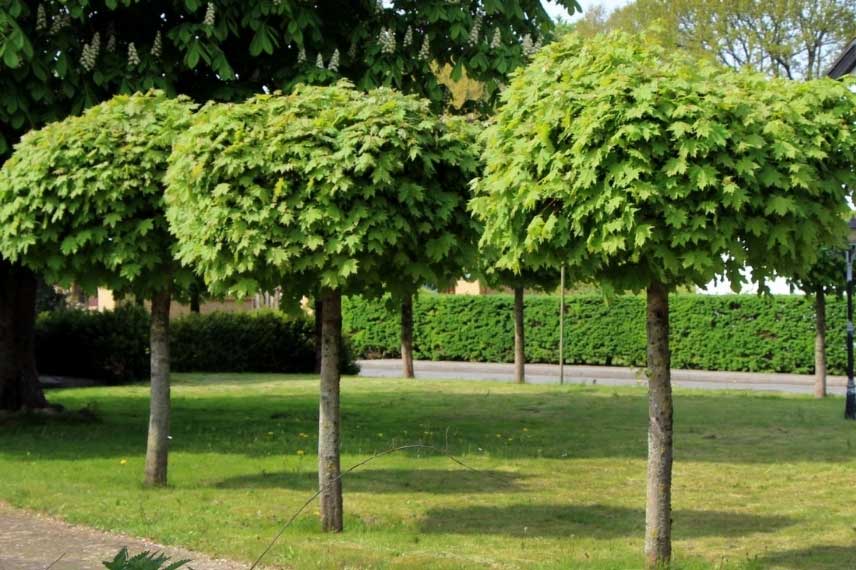
Acer platanoides ‘Globosum’
Discover other Shrub and tree balls
View all →Available in 0 sizes
Available in 1 sizes
Available in 1 sizes
Available in 1 sizes
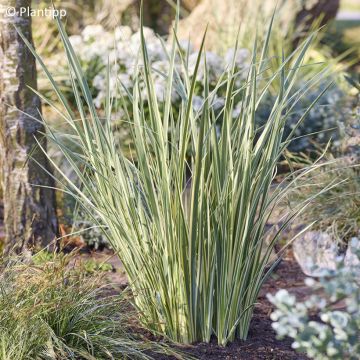
Available in 1 sizes
Available in 1 sizes
Available in 1 sizes
Available in 1 sizes
Available in 2 sizes
Available in 1 sizes
Robinia pseudoacacia 'Umbraculifera' or Umbrella acacia
For amateur or experienced gardeners, here is an interesting and easy-to-grow Acacia! The Robinia pseudoacacia ‘Umbraculifera’, or ball Acacia, also adopts a rounded habit, and its branches are made up of long deciduous leaves that change from bright green to golden yellow in autumn. The leaves appear late in spring and fall just as late in autumn. Its reasonable growth (height: 5.50 m, spread: 4 m) allows it to be planted in city gardens, where it will cope well with pollution and poor soil. It has been widely planted in alignment in urban areas, but a country garden can accommodate it just as easily. Quite hardy, this variety does not flower and tolerates light, well-drained soils. However, it does not appreciate wind, which can easily break its branches. A sunny exposure will be beneficial for it.
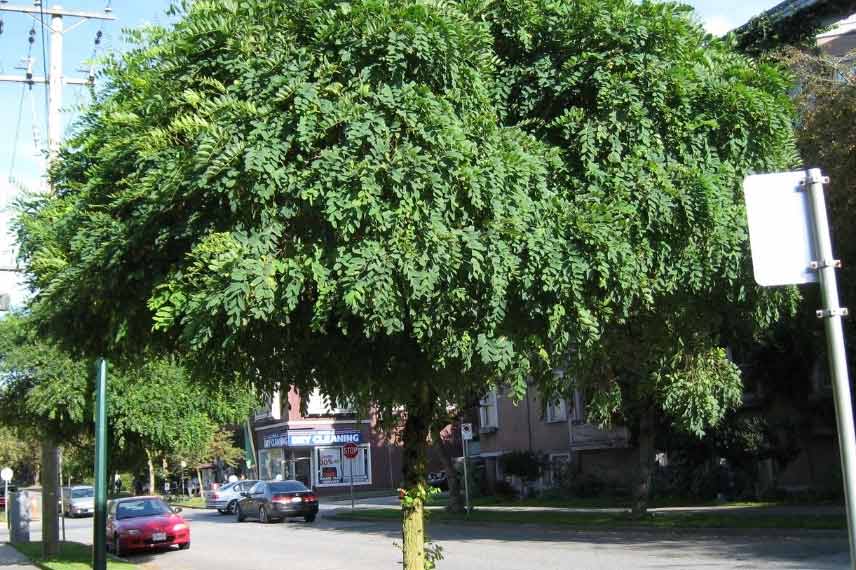
Robinia pseudoacacia ‘Umbraculifera’
Read also
7 weeping shrubsGinkgo biloba 'Mariken' or Dwarf maidenhair tree
Sacred tree in the East, the Ginkgo biloba is a true living fossil, with easily recognisable leaves. The Ginkgo biloba ‘Mariken’ is a horticultural variant of more modest size than the species (hauthor: 2.50 m, spread: 2.50 m) that allows enthusiasts of this venerable tree to incorporate it into a smaller garden, or even on a terrace or in a courtyard, planted in a large container. Perfectly hardy, this dwarf Ginkgo biloba, grafted on a half-stem, boasts a proud little crown of fan-shaped leaves, nicely rounded. Not demanding in terms of growing conditions and maintenance, it will require good garden soil that is not too dry and fairly fertile, and a lovely sunny spot where its round silhouette will shine!
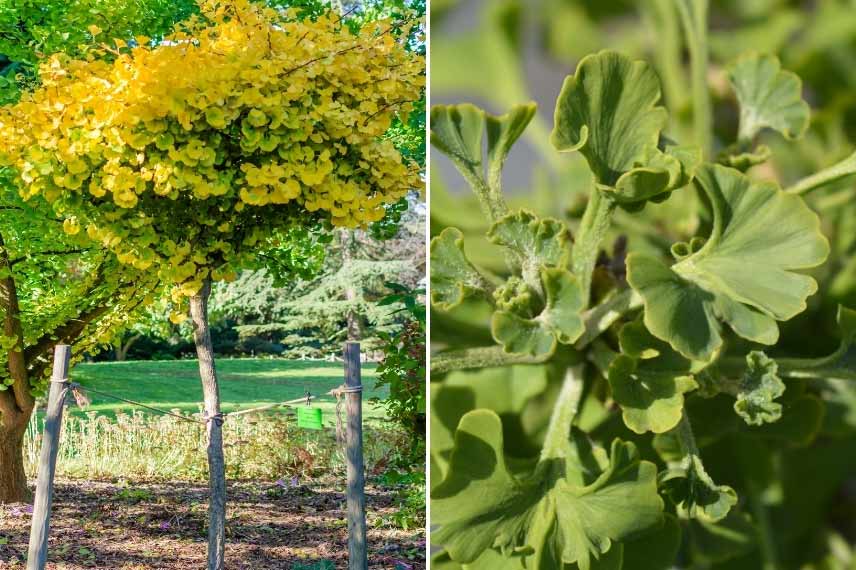
Ginkgo biloba ‘Mariken’ in autumn and detail of spring leaves
Salix integra 'Hakuro Nishiki' or Shrimp willow
Its young shoots tinged with pink have earned it the name Flamingo Willow. The Salix integra ‘Hakuro Nishiki’ is a delightful little shrub (height: 1.50 m, spread: 1.50 m) that can be offered as a clump or grafted on a stem. Hardy and fast-growing, it forms a rounded and dense clump. Its delicate, deciduous leaves change from pink to light green, passing through cream for a fresh and bright effect. Integrate it to enliven and animate a partially shaded bed, in preferably moist soil.

Salix integra ‘Hakuro Nishiki’
Choisya ternata 'Aztec Pearl' or Mexican orange blossom
A magnificent soft green foliage and a profusion of white flowers from May to June! The Choisya ternata ‘Aztec Pearl’ is an interesting Mexican Orange with its naturally rounded habit, forming a lovely bushy sphere. Its dimensions at ripeness (height: 2 m, spread: 2 m) allow it to take pride of place in a beautiful border alongside shrubs, perennials, and grasses, or even in a free-standing hedge sheltered from cold winds. Hardy and preferring light, rich, and well-drained soils, it adapts well to both partial shade and full sun.

Choisya ternata ‘Aztec Pearl’
Coronilla valentina 'Glaucous' or Glaucous coronilla
Beautiful evergreen shrub, the Coronilla valentina ‘Glauca’ is suited to poor, dry, and well-drained soils. Its bright golden-yellow flowering bursts forth in April-May, much to the delight of pollinating insects… and gardeners! Hardy down to -12°C, the glaucous coronilla forms a lovely spontaneously rounded shrub of modest size (height: 1.00 m, spread: 75 cm), easy to integrate into your plant displays. If your local climate does not allow for planting it in the ground, a large pot can also suit it, and it will brighten up spring when placed on the terrace!
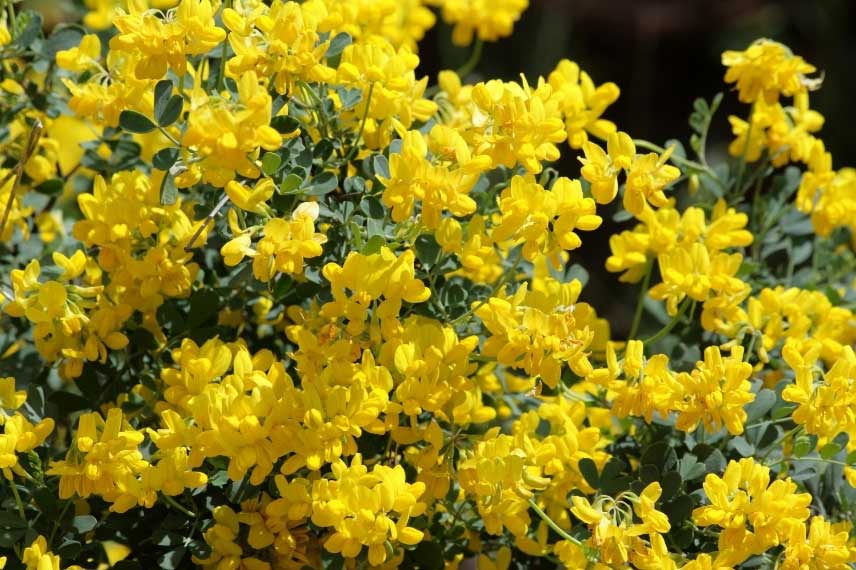
Coronilla valentina ‘Glauca’
Pittosporum tobira 'Nanum' or Dwarf pittosporum
Pretty little green cushions to place at the edge of the terrace or in front of the flower beds! The Pittosporum tobira ‘Nanum’ naturally forms a compact ball without the need for pruning shear intervention. This small shrub (height: 1.00 m, spread: 1.20 m) is a compact variety of Pittosporum tobira, well known for forming dense hedges in the south. Indeed, rustic to -5°C, the dwarf Pittosporum is best suited for regions where frost is not a major concern. Plant it in groups of three at the edge of flower beds, or in a lovely pot on the terrace; it will provide a beautiful, vibrant green ball all year round, forming a wonderful evergreen structure alongside taller evergreen shrubs. The best growing conditions for it are a well-drained, fertile, and dry soil. It loves full sun, where it will delight you – a noteworthy detail – with its lovely creamy white spring flowering, subtly fragrant.

Pittosporum tobira ‘Nanum’
Lonicera nitida 'Scoop' or Box-leaved honeysuckle
An alternative to boxwood! The Lonicera nitida ‘Scoop‘ or Box-leaved Honeysuckle is a hardy shrub, naturally compact and rounded with dark green evergreen foliage. An interesting replacement for boxwoods affected by the Box Tree Moth, this Lonicera nitida, reaching an adult size of 1 m in all directions, is perfectly suited for topiary: to add rhythm to a flowerbed alongside other more upright shrubs, or to feature in lovely pots at the entrance of a home, on a terrace, or a balcony. In the ground, plant it in well-drained, deep, and cool soil, in non-scorching sun or partial shade. In pots, remember to water it regularly.
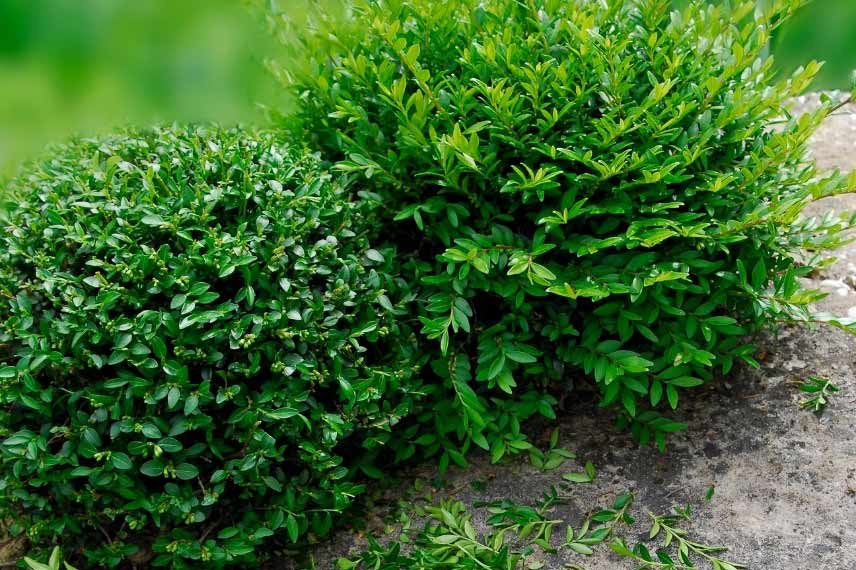
Lonicera nitida ‘Scoop’
- Subscribe!
- Contents
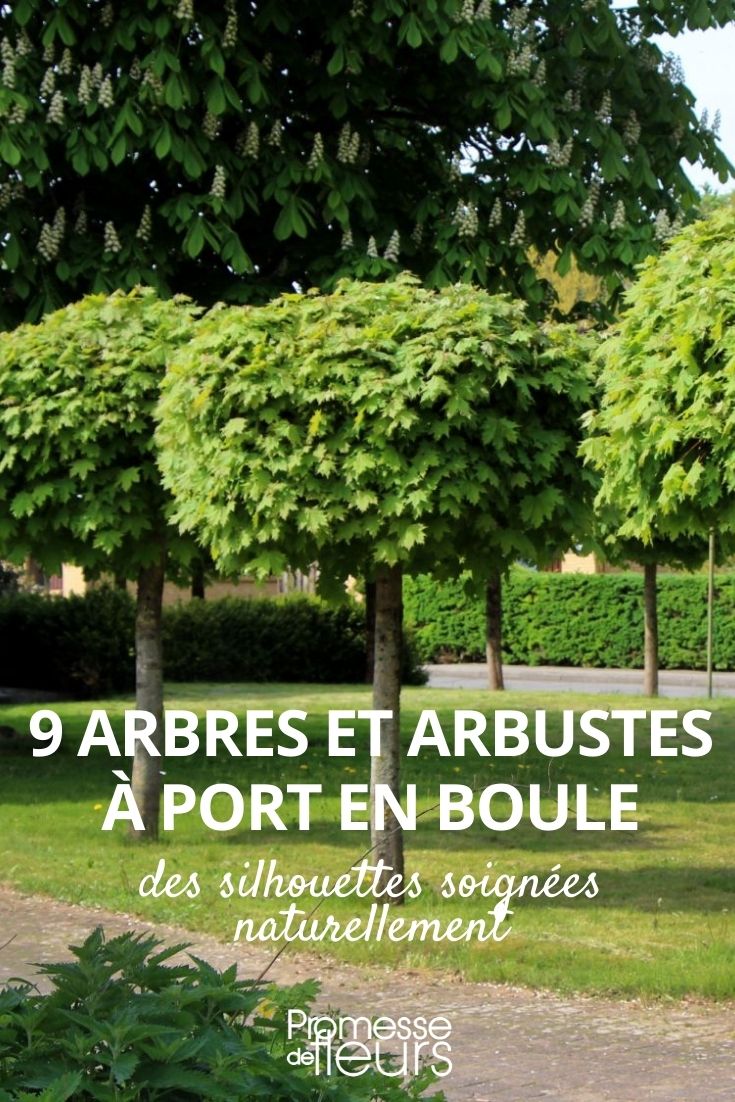
































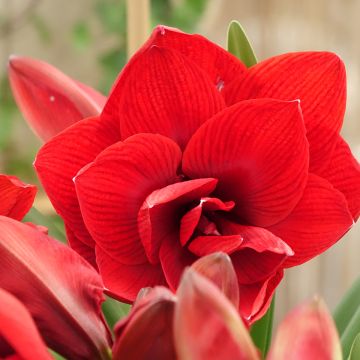


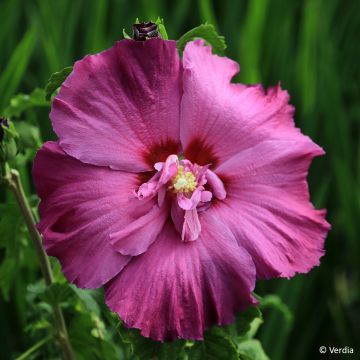

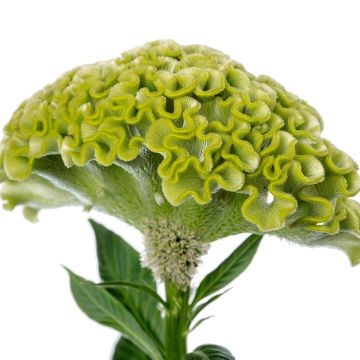
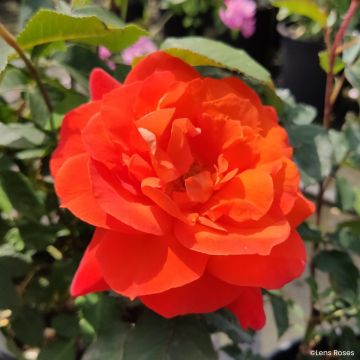

Comments